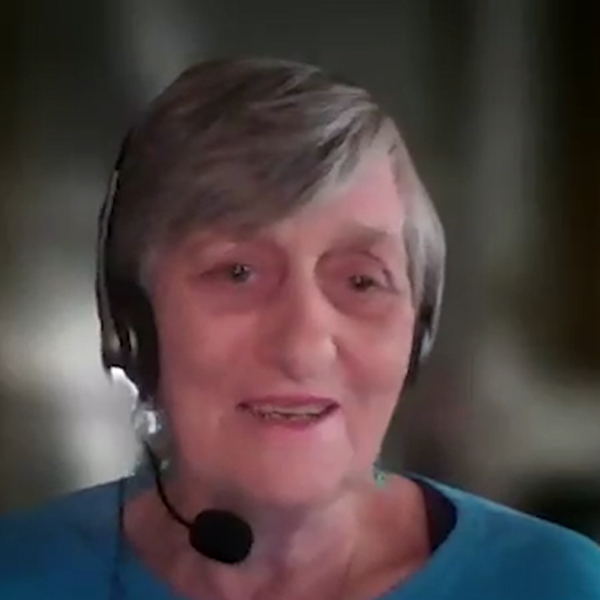“Lyn” (not her real name) is mother to several children with von Willebrand disorder. She was interviewed by Suzanne O’Callaghan, HFA Policy Officer
This personal story was previously published in National Haemophilia, No. 175, September 2011, pages 5-6.
It was the late night telephone call every parent dreads. Lyn’s son had been involved in an accident and was being rushed to hospital. But in his case there were complications – Lyn’s son has severe von Willebrand disorder (VWD) and needs careful management for his bleeding disorder.

The call came from her son’s girlfriend. Fortunately she had been at the scene of the accident, had taken his VWD emergency card out of his wallet and shown it to the ambulance officers, who wrote down the details and called ahead to the hospital where he was being taken. By another stroke of luck, the hospital was also where his Haemophilia Centre was located. By the time he arrived, his medical history had been retrieved and the Emergency Unit was ready for him.
“My husband and I arrived at the hospital at around 1 am when our son was on his way to Intensive Care. I didn’t know where to start, but in the end I left them to it,” said Lyn. “They were all trained professionals and knew about his VWD, and there was really nothing more I could do. They had already done blood tests to check his factor levels. It was interesting – they were normal. When he had the trauma his protein levels increased, so they didn’t need to give him factor VIII when he arrived.”
It was a challenging time for both her son and his family. He spent three weeks in hospital, during which time he had surgery to repair his wounds. The Haemophilia Centre team were involved in his care and monitored the surgical procedures, advising the surgical team when he needed further blood testing for factor levels and treating his dropping haemoglobin levels. “The teams worked well together,” commented Lyn.
Her son was discharged to his parents’ home and had another few months there recovering slowly. Lyn took several weeks off work to look after him, but in his family’s usual style his care was fairly low key and he stayed in charge of what was happening. His friends brought him movies to watch and his friends and family fetched and carried what he wanted until he was able to manage for himself. He is now back finishing his studies.
It may seem that Lyn’s son had luck on his side, but in many ways his hospital experience and his recovery were the result of many years of careful education and parenting that encouraged him to live his life and know how to deal with the unexpected.
Out of the blue
Discovering that several family members had VWD came as a complete surprise to Lyn and her husband. “We had no idea,” said Lyn. “No one had ever been tested until our son was two.”
After testing they found that several members of the family had VWD and some had the severe form while others had the mild form. When they looked at the family history, they could actually track the VWD back for a couple of generations through problems with severe blood noses. “They were aware that they had bleeding problems and knew that it was being passed down through the generations, but didn’t know there was a name for it,” said Lyn. “It could be a bit of an issue at times – sometimes people lost so much blood from their blood noses that they ended up unconscious on the floor with bowls of blood beside them – but they all survived and thought it was just them.”
Growing up actively
Over the years Lyn has learned to deal with the challenges of bringing up an energetic family with VWD by learning more about it and being prepared for all eventualities. She has encouraged the children to lead active lives, in spite of their different issues, but to know their limits.
“It’s always in the back of their mind, but we don’t make it a big part so they live a reasonably normal life. They haven’t been wrapped up in cotton wool. They’ve had some long nights with blood noses where they lost two to three hours sleep, but still got up in the morning and went to school. Now the older kids are going to university.”
Family holidays have been an opportunity to explore the outdoors, but also show some solidarity if one has some bleeding problems.
“Because everyone is reasonably stable, we don’t need to organise factor VIII,” explained Lyn. “I always take a bottle of tranexamic acid with me in case anyone has a bleed and I’m always aware where the hospitals are, although I don’t touch base with them.”
“The kids are fairly active and they will do anything and everything they can possibly manage – bike riding, horse riding. With most of those activities, we’d just assess at the end of the day to see if there are any bruises. If there are any injuries, we do the RICE (Rest Ice Compress and Elevate) procedure. If it’s looking nasty, the whole family stops in support and does something different. They’re all in it together and realise how it hurts if you have a reasonable size bruise or haematoma.”
If someone has had an injury, it’s a good excuse to go to the cinema or do some shopping.
“Overall we don’t have a lot of issues because the kids have always done these things. They can pace themselves and they know what causes their bruises and their bleeds. If it’s going to hurt them, they just don’t do it. I’ve never actually stopped them from doing anything. But they wear protective gear, like helmets, and if they ride horses, will ride a quiet horse.”
Developing a plan
A growing family can bring many challenges. Bruises, and severe blood noses in the middle of the night, and occasionally broken arms and collarbones have all been part of the hurdles of parenting for Lyn and her husband.
Getting to the nearest medical centre is a 15 to 20 minute trip, so Lyn is aware of the need to make a decision about whether to get treatment or not early, preferably during business hours when the medical centre is fully operational, if possible.
“I give myself a time limit, say 30 minutes, and try to deal with the situation but if that doesn’t work, I will go and seek help rather than leave it. I keep my contact numbers on the fridge – they’re easy to find there in an emergency!”
Another of Lyn’s strategies is to keep a journal about the children. She documents their injuries and the treatment, and can look back later to see how they handled the situation and what worked and what didn’t.
Growing girls
While there have been injuries and blood noses to deal with, one of the most difficult problems for Lyn was managing her daughter’s bleeding problems when she began to menstruate. Her daughter has severe VWD. As an adolescent with her second menstrual period, the blood loss from her continued bleeding caused her haemoglobin levels to drop very low. With reservations, Lyn took her to the local hospital. They did not know much about VWD and thought they could manage it, but within the week she had been referred to the Children’s Hospital and was on different medication.
“I knew that something was going to happen, but there’s not a lot you can do at the local level when your local GP just doesn’t fully understand,” commented Lyn. “It was quite a challenge at the local hospital to say, ‘we’ve got a problem here; we need to do something’. They would say they had it all under control, but by the end of the week they were more than happy to put us in an ambulance and send us off to the Children’s Hospital.”
Several years later Lyn’s daughter is relatively stable and takes hormonal medication every day, but her medical team is still working with her on her medication to get control of her bleeding problems. “She’s a ‘work in progress’”, said Lyn.
Handling emergencies
Encountering so many of these episodes over the years means that Lyn has made sure she has a plan for how to manage them. Their GP now knows something about family members and their history and the local hospital knows they are in the area. Family members have cards at the local hospital so that if they arrive at the hospital the staff know how to deal with them, what type of VWD they have and what treatment to order for them.
“It’s always worth contacting the Haemophilia Centre, because they will organise to get you the appropriate care, and even find you a bed in the hospital if need be,” added Lyn.
Her children have also been taught how to deal with emergencies.
“Now that the children are older they have grown out of their blood noses, but they keep their mobile phones on them so that if they have any problems they can contact their parents or someone to help them. They have bracelets, and while they prefer not to wear them, they could be convinced to wear them when they were going on school trips. They are young adults now and carry emergency cards in their wallets instead. Friends are important too – their friends all know what to do and where they keep their emergency card and have taken them to hospital in the past.”
Although her children have learned to know their limits, their exploration of their limits can cause Lyn some concern at times, for example when one son went snow-skiing. “But what can you do?” remarked Lyn. “They have good first aid at snow resorts. You just have to go with it sometimes, and he came home without even a bruise.”
And for the future?
What is in store for Lyn and her husband? As parents, their next step is to handle their children’s growing independence as they leave home and find their way in the world. What does the future hold for their children?
“Will my children be able to have the employment they want? If it’s in remote areas, they will probably need to check out the requirements. They haven’t thought of this yet, but I have.”
But Lyn is resolute about her role as a parent.
“We always encourage our kids to be independent. They have to be in control of their lives and we as their parents are just back-up.”
And for Lyn and her family, it is a strategy that has proven results.

